Museum
Kunstmuseen Krefeld
The Kunstmuseen Krefeld have been venues for the presentation of contemporary art for 120 years.
With their three locations—the Kaiser Wilhelm Museum in the center of town and the modern villas Haus Lange and Haus Esters in the Bockum residential area, the Kunstmuseen Krefeld represent an ideal forum for a program dedicated to the encounter of fine and applied arts.
Katia Baudin, director of the Kunstmuseen Krefeld: “Since 2016, we have been working hard to raise the unique profile of the Kunstmuseen Krefeld with their three architectural jewels and their long, multifaceted history. Our starting point is the unique DNA of the institution as a place where art, design, and architecture intersect, which we then build upon while taking contemporary approaches and issues into consideration.” This identity is rooted in the founding history of the Kaiser Wilhelm Museum, which has served as a bridge between museum, urban society, and everyday life since around 1900. It is equally influenced by the progressive programming of former director Paul Wember, who brought the international avant-garde to Krefeld in the postwar period and established the tradition of site-specific work in Haus Lange. Then as now, we see the museum as a platform and laboratory, a living space that facilitates new dialogues between the museum, artists, and the public, between disciplines and eras, between the past and the future. This universal guiding principle is reflected in everything we do, from the exhibition program, the presentation of the collection and our mediation formats to our visual identity,”
museum of the year 2022
The Kunstmuseen Krefeld—whose venues comprise the Kaiser Wilhelm Museum and two villas designed by Mies van der Rohe, Haus Lange and Haus Esters—have been named Museum of the Year 2022 by the German section of the International Association of Art Critics (AICA).
One of the reasons given by the jury of AICA (Association Internationale des Critiques d’Art) Germany for their decision was the fact that the Kunstmuseen Krefeld and their current program are a groundbreaking pioneer in the interdisciplinary “polyphony” of artistic fields, which has become a subject of discussion once again. “Founded more than 120 years ago, the Kunstmuseen Krefeld remain committed to fostering a close relationship between art, design and architecture,” begins AICA’s official statement, and continues: “While the founding phase of Krefeld’s ‘civic museum’ was about cultivating ‘good taste’ in an influential way, the idea of using art and design to illustrate the diversity of everyday experiences lives on in the Krefeld museum, which has been under the direction of Katia Baudin since 2016.”
Kaiser Wilhelm Museum
The foundation for the Kunstmuseen Krefeld was laid in 1897 with the opening of the Kaiser Wilhelm Museum at Karlsplatz.
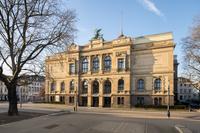
Café
Internationally renowned designer Robert Stadler designed the new café for the Kaiser Wilhelm Museum as a "Gesamtkunstwerk". The place for culture, exchange and culinary delights in Krefeld will be run by Flavia Latina as the new tenant from July 16, 2024. On 17.08. we celebrate the re-opening with a party at K+!
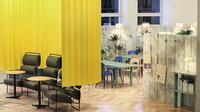
Haus Lange Haus Esters
The two urban villas Haus Esters and Haus Lange were erected in 1927–1928 by Ludwig Mies van der Rohe, one of the leading representatives of New Architecture. Originally planned as private homes for the families of two friends active in Krefeld’s silk industry, Hermann Lange and Dr Josef Esters, they are now venues for the temporary exhibitions of the Kunstmuseen Krefeld.
Haus Lange Haus Esters are a member of the Iconic Houses Network.

Garden view
Photo: Volker Döhne
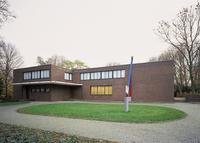
Straßenfront, Norden
Foto: Volker Döhne
Mies Van der Rohe
“I wanted to use a lot more glass in this house, but my client did not want that. I was faced with problems. They were nice people. We became good friends.” These are the few written lines we have from Ludwig Mies van der Rohe (1886–1969) on his client Hermann Lange (1874–1942) in Krefeld. They come from an interview in 1959 and thus bridge a gap of 30 years since 1930, when Haus Lange and Haus Esters were finished.
As a result, they tell us little about the real significance that the textile manufacturer had for Mies van der Rohe's creative work in the 1920s. After all, Hermann Lange was responsible for commissioning or passing on eight projects to him. Their collaboration began with the appointments for the café “Velvet and Silk” at the Berlin trade fair for women’s fashion in 1927.
By 1927–28, when he began to plan Haus Lange and Haus Esters, Mies van der Rohe was already a highly successful Modernist architect. Born in 1886 in Aachen as Ludwig Mies, the name under which he was to rise to fame was made by adding his mother's maiden name. After a brief apprenticeship in Aachen (vocational school, his father's stonemason business) and initial employment as a furniture designer by Bruno Paul and later as an architect for Peter Behrens in Berlin, in 1912 he opened up his own architectural practice.
By the beginning of the 1920s he had already come up with trailblazing ideas for a high-rise at Friedrichstrasse station (1921), an office block in reinforced concrete (1923), a country house also in reinforced concrete (1923), and for a country house in brick (1923/24), even if none of them were built. At the same time, by the mid-1920s Mies van der Rohe was already an experienced architect who built villas and country houses for the upper classes in Berlin and its surrounding areas. In 1926 he directed the Werkbund exhibition The Apartment, which was responsible for the Weissenhof Estate in Stuttgart. That same year he became vice president of the Deutscher Werkbund and in 1930 director of the Bauhaus, which had moved from Dessau to Berlin, where it was closed in 1933 by the National Socialists.
These few key dates already give an idea of the sheer scope and diversity of this great man of architecture. The foundations of Miesian design, which is inadequately conveyed by such buzzwords as “open plan” and “steel frame” (even for residential buildings and country homes), had already reached its maturity in Mies van der Rohe's work in Europe. Ultimately his greatly impressive achievements while in America from 1938 onwards were his revolutionary ideas for high-rise buildings and the concepts behind his large-scale projects. Mies van der Rohe developed the curtain wall made of steel and glass, as well as trussless interiors for hall constructions with wide-span roofs.
In 1953 Mies van der Rohe was made a Member of the Order Pour le Mérite (German Federal Republic) and in 1963 received the Presidential Medal of Freedom—an honor bestowed by the president of the United States of America. Mies van der Rohe died on August 17, 1969 in Chicago.
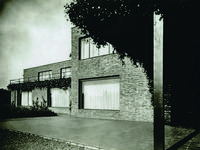
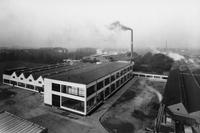
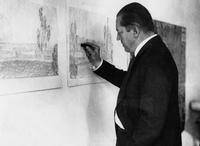
Team
Director
Katia Baudin
T +49 (0)2151 97558-111
kunstmuseen@krefeld.de
Administrative Assistant
Sylvia Görres
T +49 (0)2151 97558-111
sylvia.goerres@krefeld.de
Deputy Director
Dr. Sylvia Martin
T +49 (0)2151 97558-114
sylvia.martin@krefeld.de
Head of Collections
Dr. Magdalena Holzhey
T +49 (0)2151 97558-113
magdalena.holzhey@krefeld.de
Associate Curator for Research
Dr. des. Waleria Dorogova
T +49 (0)2151 97558-118
waleria.dorogova@krefeld.de
Assistant Curator
Ann-Kathrin Hörrlein
T +49 (0)2151 97558-141
ann-kathrin.hoerrlein@krefeld.de
Education and Public Programs
Thomas Janzen
T +49 (0)2151 97558-112
thomas.janzen@krefeld.de
Eva Caroline Eick
T +49 (0)2151 97558-156
eva.eick@krefeld.de
Fundraising and Partnerships
Dr. Tabea Malter
T +49 (0)2151 97558-136
tabea.malter@krefeld.de
Press and Public Relations
Fabienne Kylla
T +49 (0)2151 97558-131
fabienne.kylla@krefeld.de
Photographer
Dirk Rose
T +49 (0)2151 97558-122
dirk.rose@krefeld.de
Library and Archives
Stephan Michaeli
T +49 (0)2151 97558-153
stephan.michaeli@krefeld.de
Visitor Services
Frederike Krahn
T +49 (0)2151 97558-137
servicekunstmuseen@krefeld.de
Head of Administration
Beatrix Schiffer
T +49 (0)2151 97558-155
beatrix.schiffer@krefeld.de
Administration
Dr. Luise-Aurelia Burgos y Luque
T +49 (0)2151 97558-151
l.burgosyluque@krefeld.de
Agnieszka Wagner
T +49 (0)2151 97558-152
agnieska.wagner@krefeld.de
Jasmin Kadappally
T +49 (0)2151 97558-126
jasmin.Kadappally@krefeld.de
Conservation
Sebastian Köhler
T +49 (0)2151 97558-122
sebastian.koehler@krefeld.de
Denise Klatt
T +49 (0)2151 97558-122
denise.klatt@krefeld.de
Registrar
Hanna Schöb
T +49 (0)2151 97558-125
hanna.schoeb@krefeld.de
Technical Manager and Master Carpenter
Thomas Larisch-Pütz
T +49 (0)2151 97558-134
thomas.larisch@krefeld.de
Art Handling and Carpenter
Henrik Weiß
T +49 (0)2151 97558-135
henrik.weiss@krefeld.de
Storage Management and Art Handling
Andreas Schwaen
T +49 (0)2151 97558-116
andreas.schwaen@krefeld.de
Facility Manager
Kaiser Wilhelm Museum
Ernst-Ulrich Kuhlmann
T +49 (0)2151 97558-124
e.kuhlmann@krefeld.de
In-House Technician
Kaiser Wilhelm Museum
Thorsten Hausmann
T +49 (0)2151 97558-139
thorsten.hausmann@krefeld.de
Facility Manager
Haus Lange und Haus Esters
Jürgen Schmitz
T +49 (0)2151 9557-18
juergen.schmitz@krefeld.de
Housekeeper
Haus Lange and Haus Esters
Vera Lasch
T +49 (0)2151 9557-19